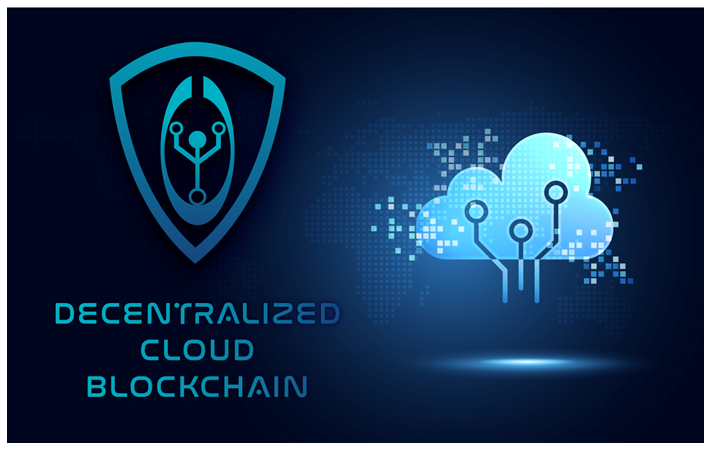Guest Post
The ILCoin Project solving the blockchain scalability problem

Disclaimer: This a paid post, and should not be treated as news/advice.
Blockchain has revolutionized the aspect of technology across the globe within the various industry embracing technology. The technology has proved to have more potential than many had hoped.
Despite its popularity in the different field, many have raised concerns about the technology. Some of the concerns include its scalability, as well as its inability to store relevant data/information permanently.
How scalability has affected the blockchain industry
Storing data on the blockchain has since been a significant issue limiting the adoption of blockchain and its technology.
Limiting storage on the block has led to a reduction of speed and the reliability needed to complete any transactions and other processes on the blockchain. As it is, the blockchain users have to store information on eternal devices, which brings many various challenges.
The limit to the number of transactions made via blockchain (bitcoin network) is a significant concern. The Bitcoin scalability problem is directly related to the fact that Bitcoin blockchain comes with a limited size and frequency of its blocks. Currently, Bitcoin technology has a default size limit of 1MB per block while Bitcoin Cash improved this block size to 32MB.
On average, Bitcoin processes 4.6 transactions per second. According to a report from Deloitte Insights, blockchain-based systems are slow, making it a no go zone for major enterprises that rely on high-performance transaction processing systems.
In 2017 and 2018, crypto community members suffered from transfer delays accompanied by high fees on the Bitcoin network. Those trading Ethereum experienced congestion on the Ethereum blockchain from using the Cryptokitties app.
Initially, many miners thought that increasing the size of a block accompanied by reducing the block time (reducing the hash complexity) would promote scalability. However, these processes are not enough. These techniques do not do much. This is because the ability to scale will reach the ceiling even before it completes the specified number of transactions for the system to compete with enterprises that are not on a similar platform.
Major players in the financial market that are not employing blockchain can transact up to 1,736 transactions per second. Looking at the difference, the need to scale blockchain is essential, looking at the more comprehensive picture.
ILCoin Blockchain
ILCoin Blockchain Project, the first project to develop a quantum-resistant consensus algorithm, recently finished creating their RIFT protocol and they are working on the implementation. According to the announcement, the company defined RIFT as the new concept of a two-layer ledger that is designed to deal with the issue of blockchain network scalability.
In their white paper, the ILCoin project is indented to create a blockchain platform that provides its users with the opportunity to achieve their long-term business goals safely. The developers explained the project as follows:
“Going way past the cryptocurrency’s basic functionalities, we are continuously working on opportunities that– with the help of ILCoin – allow us to achieve a much broader and more fulfilling usage of blockchain technology.”
The ILCoin hopes that these solutions will become popular in the crypto market and beyond. Ideally, the solutions will solve two pressing problems blockchain developers have been struggling with for years.
RIFT protocol
The unsolved problem of scalability has been a massive hindrance to the adoption of blockchain technology. After the long wait and a lot of research, experts in the field have created a solution that could end the scalability issue. Many know this solution as the RIFT Protocol.
At its core, the RIFT Protocol is the foundation and basis of Decentralized Cloud Blockchain (DCB). This means that the RIFT Protocol and Command Chain Protocol (C2P) are the prerequisites for DCB. Indeed the RIFT Protocol makes it easy to set up an on-chain based data storage system like the DCB.
The Decentralized Cloud Blockchain is a data storage platform that is based on a distributed ledger technology. The platform provides on-chain storage for users within the blockchain space. DCB depends on data storage with a system that is built upon the SHA-256 ILCoin Decentralized Hybrid Blockchain system.
The RIFT protocol composition
Creators of the RIFT Protocol claim that it has a potentially unlimited network size. This network is made of a mined Block that contains Mini-Blocks. These Mini-Blocks then contain transactions. The result of this creation is a self-contained block that mirrors down. This is accomplished through mined Blocks that use a reference to the Mini-Blocks which reference to the transactions.
Notably, Mini-Blocks are similar to traditional Blocks. However, the Mini-Blocks are not mined like conventional blocks. Mini-Blocks are self-contained inside the traditional Blocks through a reference. They contain the references to transactions. Mini-Blocks’ hash is generated automatically by the code, which eliminates the need for them to be mined.
Technically speaking, RIFT has two chains, one of the Blocks and the second one of Mini-Blocks, all connected with the references. The RIFT protocol uses these two chains that work in tandem. This, in turn, allows for a complete redesign of the blockchain technology by “the maintaining the primary boundaries of being decentralized and having peer-to-peer synchronization.” This creates the ability to process a massive amount of transactions.”
What does ILCoin Project Aim To Achieve?
The ILCoin Team has created a blockchain platform that allows users to achieve long-term enterprise goals without compromising on safety and security. With the help of ILCoin, individuals and businesses can reach a broader and fulfilling application of blockchain technology. In addition, you will be able to conduct business transactions legally without restrictions from the financially regulated environment.
The need to improve blockchain scalability, safety, and security is essential, especially with the increasing demand for virtual currency and increased blockchain technology adoption. More importantly, many will be able to store more data and information on the blockchain. In turn, this will increase the number of transactions a process can perform in a second.
It provides easy to use features while at the same time uphold on a supreme level of security. As such, this project brings blockchain technology closer to a better data storage framework. Therefore, it creates an ultimate solution that addresses economic, legal, and financial processes not just currently but also pushes for future completion of operations.
In addition, individuals have raised concerns on how the parties involved actually, know that the movement of value happened as well as whether or not the transaction can be reversed.
On-chain transactions, on the other hand, address such concerns. For example, a reverse can only occur if the majority of the hashing power agrees to reverse the transaction. Therefore, it needs more than one party to reverse a transaction.
In general, since its launch in 2015, ILCoin has massively contributed to the growth of blockchain and its technology. Despite starting as an alternative to Bitcoin, ILCoin has come a long in making helping with adoption of blockchain. Currently, it has developed many blockchain-related products including the ILCoin wallet and the ILCoin cryptocurrency.
